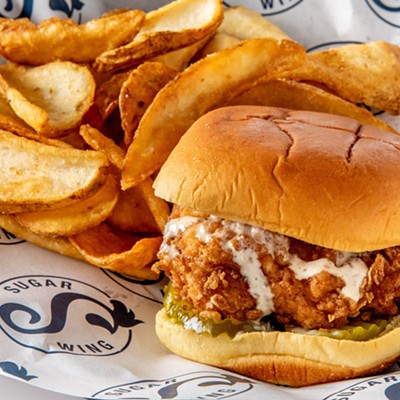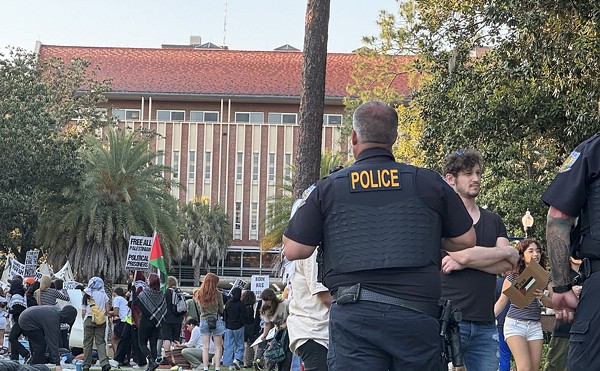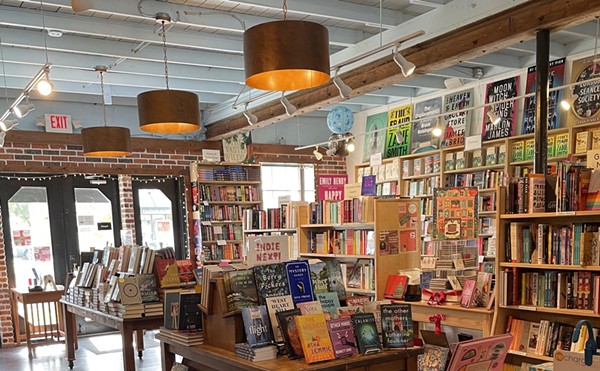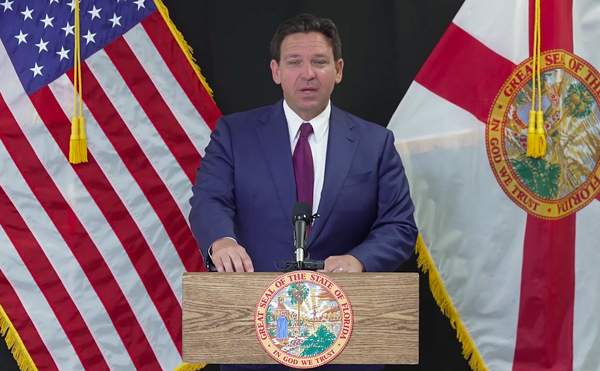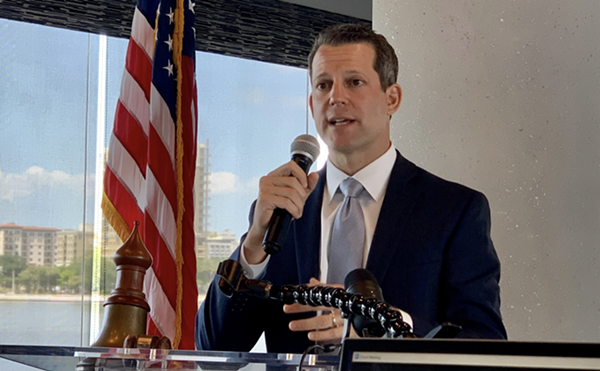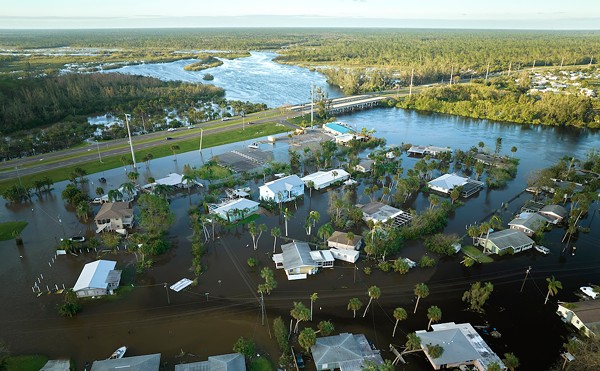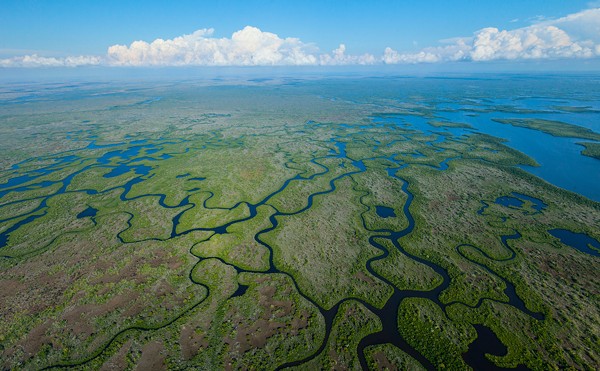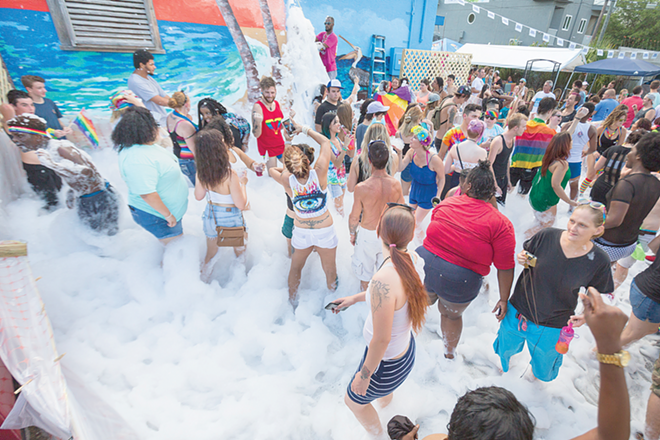
Grand Central is the birthplace of St. Pete Pride, which launched its first celebration there in 2003. The festival has grown from several thousand attendees at a one-day event to more than 265,000 over two days in 2016. [Disclosure: CL has been a past sponsor of St. Pete Pride.]
Now the event’s organizers want to take the celebration to the downtown St. Petersburg waterfront, where they say logistics allow for a safer and lower-cost event. SPP leaders also believe there’s a good chance that the relocation would help attract World Pride, an international event that could boost St. Pete’s LGBT tourism profile. When tourism and Pride officials make their pitch, the scenic milieu — the boats, the bay, the Dali “Enigma” — could tip the scales in St. Pete’s favor.
The St. Pete Pride board of directors will vote on the move on Jan. 17; obtaining permits from the city will follow. But in the days since Pride announced the move, there’s been debate over whether it’s a good idea.
Eric Skains, executive director of St. Pete Pride since 2014, said the shift to a more visible part of town reflects St. Pete’s embrace of diversity.
“I tell people the gay district is not just secluded over in a few blocks. It’s the entire city of St. Petersburg,” he said in a phone interview. “I would say St. Petersburg is the gay area for all of Tampa Bay.”
But some in the Grand Central District — fearing a loss in vital revenue, and charging abandonment of the event’s grassroots origins in the city’s first LGBTQ neighborhood — are outraged.
“To me it’s just kind of disappointing,” said Brian Longstreth, one of St. Pete Pride’s founders. who owns Punky’s, a restaurant on Central, as well as a nearby real estate agency and a bed and breakfast that caters to LGBT visitors. “St. Pete Pride and the Grand Central District worked together pretty well for about a decade, and communicated and helped each other. And in the past couple of years it just doesn’t seem like St. Pete Pride cares that much about the Grand Central District and the business owners there.”
Mitch Faber, owner of Old Key West Bar and Grill, says he spent $8,000 setting up a popular foam party over the 2016 Pride weekend (and much more preparing for the celebration as a whole). He calls the proposed move “a slap in the face” to the district.
“Every major event is downtown,” he said. “If they’re talking about building and growing St. Pete, spread the wealth a little bit. This is the one event we have that generates a lot of money for the district, and now it’s completely ripped away from us.”
Places like Faber’s are packed during Pride weekend, and the proceeds help get them through the slow season that follows.
But Skains said Pride still wants the district to be part of the celebration. That’s why planners have added a Friday night event that would take place in the area. He added that he thinks Grand Central would still have an influx of partygoers, given its profile.
“There are still opportunities to get involved,” he said. “Just because Pride is 20 blocks east doesn’t mean people won’t go to what are traditionally known as gay bars and restaurants in the area. It’ll still be busy.”
Some wonder whether the upscale restaurants on nearby Beach Drive will be as welcoming as the Grand Central businesses.
“On Pride during the parade you see everything here. And I mean everything. Do Bella Brava and Cassis want that on a Saturday night?” said Darren Conner, a former co-owner of the Queens Head.
The inevitable litter problem — especially the throngs of plastic beads tossed everywhere, some inevitably ending up in the bay — could be a setback, but Skains said he’s looking at what can be done to prevent it.
Downtown businesses have yet to take a position on whether they want the celebration.
“We have had a lack of communication from the leadership of St. Pete Pride, so we kind of have been taken by surprise by the social media and certainly media inquiries,” said Tami Simms, president of the Downtown Business Association of St. Petersburg. “There are pros and cons from every side but every one of them needs to be carefully deliberated.”
Because of the way the district and adjacent Kenwood neighborhood are laid out, Skains says security post-Pulse is getting pricey.
“It was an extremely expensive undertaking to add to the additional security costs this year,” he said.
Faber said despite the amount of alcohol consumption and small gaggles of homophobic protesters tempting partygoers into debate, the event is always safe.
“We had 265,000 people here last year. How many arrests were made? Zero. How many problems did we have? Zero,” he said.
Despite the social media uproar that erupted with the announcement earlier this month, a change in locale has been in the works for years.
“This has been a topic among the board for the last eight or nine years,” said St Pete Pride’s longest-serving board member, Stanley Solomons, in a media release announcing the move. “We were always familiar and comfortable with the Grand Central District. But regardless of my fondness with the current location, the time to move came when the logistics and security measures changed.”
Skains said it was a topic of discussion before he was even hired; he was asked at his job interview about potentially presiding over a change in location.
For years, the parade used a large parking lot at 3rd Avenue North and 31st Street as its staging area, and the parade route ran from there to Central and 21st Street, mostly along Central.
In 2017, it’s expected to launch from Albert Whitted Park and run north on Bayshore Boulevard, right along the downtown St. Pete waterfront, to Vinoy Park.
In recent years, Pride has morphed from a daytime parade into a two-day celebration with a Saturday-night parade and a Sunday celebration with vendors and entertainment, as well as several related peripheral events leading up to and during the fest. Over that time, the event’s impact doubled from $10 million to $20 million.
Skains said an economic impact study found that half of Pride attendees come from out of town and stay in nearby hotels, most of which are closer to the proposed new location.
But Longstreth, the festival co-founder, said hotels as far away as the beaches get packed with attendees.
St. Petersburg Mayor Rick Kriseman said through a spokesman that while he’d like to see the festival stay in the Grand Central District, there’s little the city legally can do to block the move.
“It’s not his preferred route and he’s talked to the Pride organizers about that,” said Ben Kirby, the mayor’s communications director. “We always try to accommodate and work with parades in the city.”



